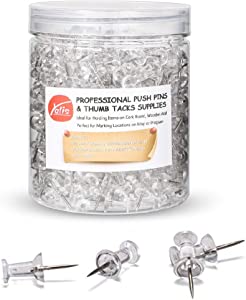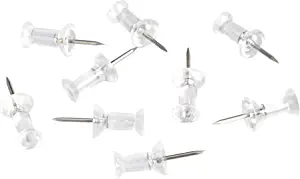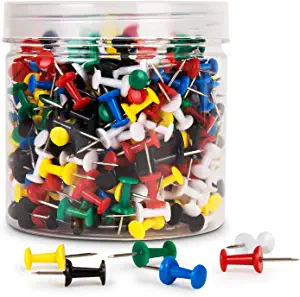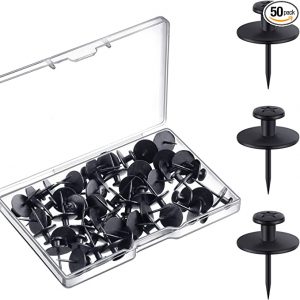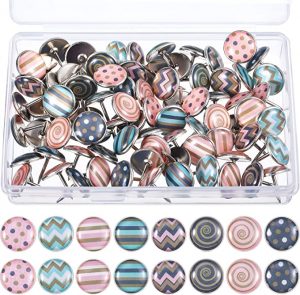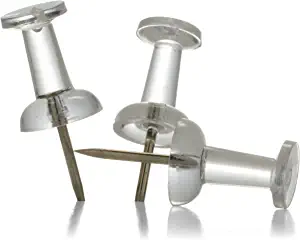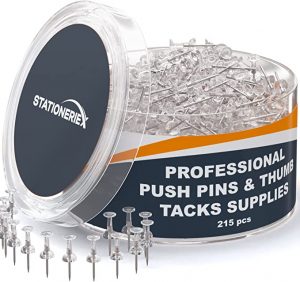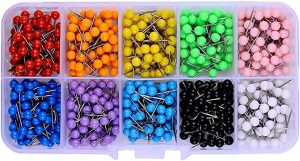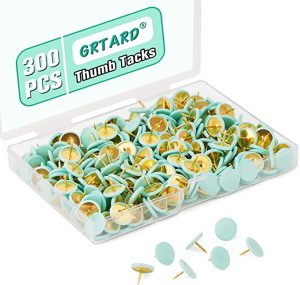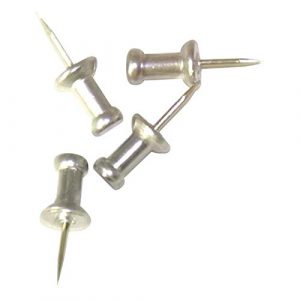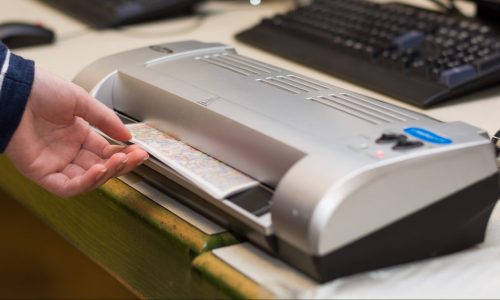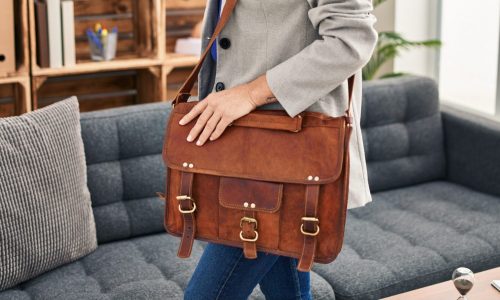The Best Push Pins
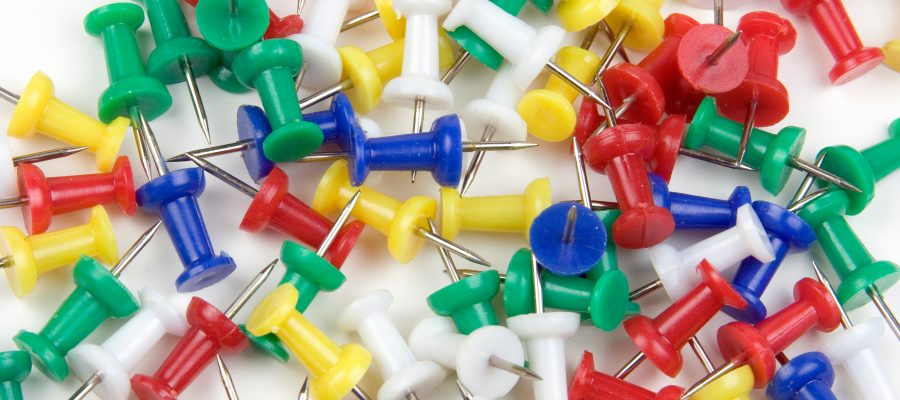
Our Review Process
Don't Waste Your Money is focused on helping you make the best purchasing decision. Our team of experts spends hundreds of hours analyzing, testing, and researching products so you don't have to. Learn more.
Our Picks For The Top Push Pins
- 1. Yalis Clear Plastic Head Steel Point Push Pins, 600 Count
- 2. Amazon Basics Clear Plastic Head Steel Point Push Pins, 200 Count
- 3. BetyBedy Assorted Colors Push Pins, 400 Count
- 4. Hotop Double Headed Push Pins, 50 Count
- 5. TecUnite Decorative Multi-Patterned Push Pins, 80 Count
- 6. Officemate Clear Plastic Steel Point Push Pins, 100 Count
- 7. Stationeriex Heavy Duty Plastic Head Steel Point Push Pins, 215 Count
- 8. besttou Multi-Color Round Head Push Pins, 600 Count
- 9. Grtard Round Head Sharp Steel Point Push Pins, 300 Count
- 10. ADVANTUS Aluminum Head Steel Point Push Pins, 100 Count
Choose from multiple options in both clear and solid hues packaged in a transparent container. Each pushpin measures about 1 inch in length with a 0.32-inch head. The needles are made from steel for extra strength and reliability.
Extra UsefulYou’ll get 600 pushpins in a reusable clear container that will blend well with any décor.
If you’re looking for a reliable push pin that blends well with your office environment, this set is a great choice. You’ll get 200 standard-size pins, each with a 3/8-inch ground steel point and ½-inch plastic head. The pins come in a clear plastic container for easy storage.
Easy to UseThe 3/8-inch ground steel point on this pin gives you a thumbtack that slides easily into boards whether they’re made of cork, foam or paper.
This assortment of red, yellow, blue, green, white and black push pins lets you mix up the colors as the mood strikes. You’ll get 400 durable pins in a clear reusable container. You can also choose clear pushpins or thumbtacks instead.
Solid ColorsBrighten up your office space with these push pins, which come in a pack of assorted colors.
The unique double-headed design of these pushpins makes them strong enough to hang heavier objects, like photos and clocks, along with lighter items. Each pin is made from durable stainless steel to reduce rust and hold up over many uses.
Versatile UsesHang everything from photos and ornaments to papers with these double-headed pins.
Buying Guide
Whether you work in an open office, a cubicle, or a home setup, customizing your workspace can help you create a comfortable space of your own. Studies have even shown that workspace personalization can combat emotional exhaustion, give you a feeling of control over your environment, and help you become more productive.
Using bulletin boards or putting images up on cubicle walls with pushpins can help inspire your work, remind you of your family, or help you recall notes, meetings and errands. And one great thing about using pushpins is that you can easily change things up to make the space your own, no matter what that means to you.
Traditional pushpins came in more of a thumbtack style, with a flat, wide head. But over the years, pushpins with plastic heads have become more popular. Whether they’re clear or colored, the longer heads make the pins easier to grip.
Before you choose a pushpin, though, it’s important to pay attention to the pin itself. You’ll want one made from durable steel to ensure it will hold up over many uses. The pin should have a sharp, fine point to make it easier to push into your bulletin board. You’ll want a pushpin that sinks into the material and, once it’s been placed, maintain its hold. When you’re ready to remove the pushpin, it should also be easy to take out.
What to Look For
- Pus pins typically come in a container for storage, but you should check to make sure it meets your needs. Set aside some storage space for your pins, especially if you’re buying in bulk.
- Today’s pushpins come in many styles and colors. You can stick with primary colors or find some that match your aesthetic. Also, consider clear or low-profile options that are less visible, so the focus stays on the content you’re pinning.
- The standard size of the needles that come with pushpins is 3/8 inches. You can find longer or shorter ones, but the longer ones might poke through your board and shorter ones might not dig deep enough for a secure hold.
- Most pushpins won’t be strong enough to hold heavier items like framed photos or clocks. Double-headed pushpins might more easily tackle that job, but you may be better off going with a hook or nail that you can drive into the wall.
- One downside of pushpins is that they’ll poke a hole in your items. If you have cards, photos and other memorabilia you want to preserve, you might not want to use a pushpin. One alternative technique is to use a coated paperclip to hold your photo, then flatten the paperclip against your bulletin board and use a pin to hold it in place.
- If you have young children around, you might want to go for pushpins with safety tips. This type of pin won’t be as sharp, though. A better move is to keep your pushpins out of reach of little fingers by locking them in a drawer or cabinet or storing them up high.
More to Explore
The exact origin of thumbtacks or drawing pins is unknown, but they were used on maps as early as the 1700s. These pins served a variety of purposes over the years. However, it was New Jersey’s Edwin Moore who created an improved version — the pushpin — and brought it to the masses. He patented his invention in 1900 and then, with just $112.60, he founded the Moore Push-Pin Company.
In his patent application, Moore described pushpins as “a pin with a handle” that could be held by the operator. Each evening, Moore would make a batch of his pushpins, then sell them the next morning. His versions were made from glass and steel. In 1903, he began advertising, with an ad appearing in “The Ladies’ Home Journal” gaining him more widespread recognition. In the years to follow, Moore expanded his company, patenting items like picture hangers and map tacks.

